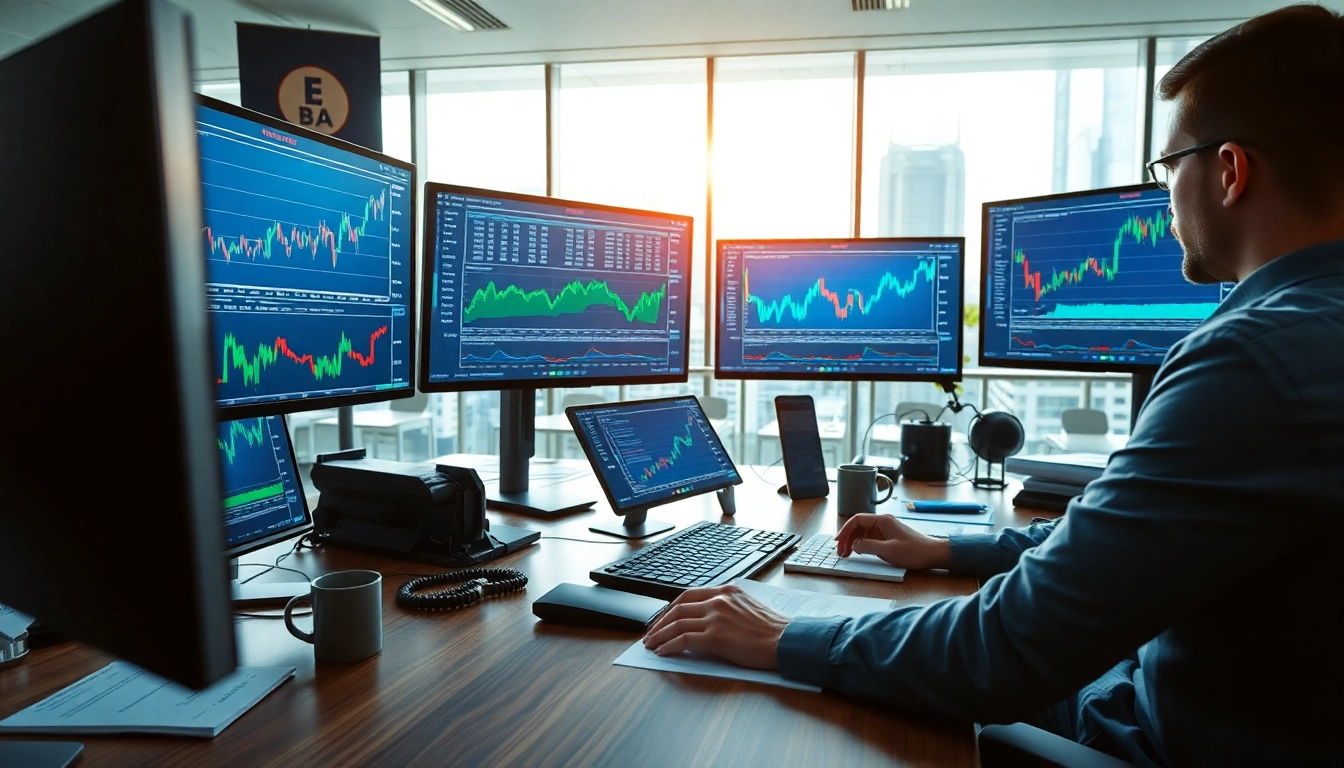Understanding Trade Futures
In the dynamic landscape of global finance, one concept continues to gain attention from both seasoned investors and newcomers alike: trade futures. Trade futures are contracts that obligate the buyer to purchase an asset, or the seller to sell an asset, at a predetermined future date and price. This instrument allows participants to hedge against risk or speculate on the future movements of the market. Understanding how to navigate this complex realm is vital for anyone looking to achieve success in financial trading.
What Are Trade Futures?
Trade futures are agreements between parties to buy or sell a specific quantity of a commodity or financial instrument at a predetermined price, set to be executed at a future date. The most common attributes of futures contracts include:
- Standardized Contracts: Futures contracts are standardized to facilitate trading on exchanges. This standardization includes contract size, expiration dates, and price increments.
- Margin Requirements: Initiating a trade in futures doesn’t require the full amount of the trade to be deposited. Instead, traders are required to put down a margin—an amount that acts as collateral.
- Settlement: Futures contracts can be settled in two ways: physical delivery of the asset or cash settlement based on market prices at expiration.
Key Terminology in Trade Futures
To engage effectively in trade futures, it’s crucial to familiarize yourself with key terminology:
- Long Position: Buying a futures contract with the expectation that the price will rise.
- Short Position: Selling a futures contract with the expectation that the price will fall.
- Contract Month: The month in which the futures contract expires.
- Open Interest: The total number of outstanding contracts that have not been settled.
- Hedging: Using futures contracts to offset potential losses in another investment.
The Importance of Trade Futures in Financial Markets
Trade futures play a pivotal role in the functioning of financial markets. They provide several advantages:
- Price Discovery: Futures markets are credible environments for determining the price of an asset based on supply and demand dynamics.
- Liquidity: With a high volume of trading in futures contracts, liquidity is generally enhanced, allowing participants to enter and exit positions with ease.
- Risk Management: Traders can hedge against price fluctuations in the underlying asset by using futures contracts to secure future prices.
How to Invest in Trade Futures
Steps to Getting Started with Trade Futures
Investing in trade futures may seem intimidating, but breaking down the process into manageable steps can make it approachable:
- Education: Before you start trading, acquire a solid understanding of the futures markets and strategies.
- Choose a Brokerage: Select a brokerage that offers access to futures trading, looking for those with competitive commissions and user-friendly trading platforms.
- Open an Account: Create a trading account, which often requires a margin deposit and verified identification.
- Develop a Trading Plan: Establish your investment goals, risk tolerance, and trading strategy before placing orders.
- Start Trading: Begin with small trades to build your experience and confidence, gradually expanding your investments as you learn.
Selecting the Right Futures Contracts
When navigating the futures market, choosing the right contracts is crucial for aligning trading strategies with personal goals. Consider the following factors:
- Asset Class: Decide whether you wish to trade commodity futures (such as agricultural products or energy) or financial futures (such as stock indexes or currencies).
- Contract Size: Futures contracts vary in size. Assess whether you are comfortable trading larger contracts or prefer smaller ones to manage risk better.
- Expiration Dates: Contracts have specified expiration dates. Ensure that the timeframe aligns with your investment strategy by selecting contracts that suit your trading horizon.
Tools and Resources for Trade Futures Investment
Utilize a variety of tools and resources to enhance your trading performance:
- Analysis Software: Advanced analytical tools can help in both technical and fundamental analysis.
- Market News: Staying informed on market events through news outlets and blogs dedicated to futures trading can provide insight and assist decision-making.
- Demo Accounts: Practice trading in a risk-free environment to build your skills before deploying real capital.
Market Analysis Techniques for Trade Futures
Fundamental Analysis in Trade Futures
Fundamental analysis involves assessing the underlying economic factors that can influence the price of the underlying asset:
Important metrics to consider include:
- Supply and Demand Dynamics: Look at inventory reports, production levels, and demand forecasts that can significantly influence prices.
- Economic Indicators: Monitor interest rates, inflation rates, and GDP growth as they affect financial markets and investor sentiment.
- Geopolitical Events: Global politics can have profound effects on commodity prices, especially in markets sensitive to supply disruptions.
Technical Analysis Tools for Trade Futures
Technical analysis focuses on price trends and market behavior over time. Key tools include:
- Charts: Utilize various types of charts (line, bar, candlestick) to visualize market movements.
- Indicators: Employ moving averages, RSI, and MACD to interpret market trends and identify potential opportunities.
- Volume Analysis: Analyze trading volume in conjunction with price movements to validate the strength of a trend.
Sentiment Analysis: Understanding Market Psychology
Sentiment analysis provides insights into the collective behavior and psychology of market participants. Methods include:
- Surveys: Track sentiment indicators from investor surveys which can signal bullish or bearish trends.
- Social Media and News Sentiment: Monitor news articles and social media platforms to gauge market sentiment that can impact price movements.
- Commitment of Traders Reports: Analyze weekly reports that detail the positions held by various groups in the futures markets for insights into market sentiment.
Risk Management in Trade Futures
Identifying Risks in Trade Futures Trading
Like any form of investment, trading futures carries inherent risks that must be managed effectively:
- Market Risk: The risk that the market will move unfavorably against your position.
- Liquidity Risk: The possibility of being unable to close a position at the desired price due to low trading volume.
- Leverage Risk: The use of borrowed capital can magnify both profits and losses significantly.
Effective Strategies for Risk Mitigation
Implementing effective strategies can mitigate the risks associated with trading futures:
- Diversification: Spreading investments across various assets can reduce the impact of poor performance in any single position.
- Position Sizing: Carefully determine the size of each trade based on your overall portfolio to manage risk exposure effectively.
- Staying Informed: Regularly analyze market conditions and economic indicators to adjust your strategies promptly.
Utilizing Stop-Loss and Take-Profit Orders
Stop-loss and take-profit orders are essential tools for managing risk in futures trading:
- Stop-Loss Orders: Set a predetermined price level at which you will sell to prevent further losses.
- Take-Profit Orders: Establish a price target at which you will close a position to secure gains without the need for continual monitoring.
Evaluating Performance in Trade Futures
Key Performance Indicators for Trade Futures
To assess the effectiveness of your futures trading strategies, monitor key performance indicators (KPIs):
- Return on Investment (ROI): Measure the return against the initial capital invested in futures contracts.
- Win/Loss Ratio: Analyze the ratio of winning trades to losing trades to evaluate trading effectiveness.
- Maximum Drawdown: Assess the maximum observed loss from a peak to a trough, helping to understand risk exposure.
Adjusting Strategies Based on Market Performance
Monitoring market performance is fundamental for adjusting trading strategies:
Conduct routine reviews of your trading performance and the broader market, allowing you to refine or alter your strategies as necessary. This dynamic approach will enhance the likelihood of achieving your investment objectives.
Case Studies: Successful Trade Futures Strategies
Learning from successful strategies utilized by experienced traders can provide valuable insights. Here are a couple of noteworthy examples:
- Hedging with Futures: A grain farmer locks in a price for their future harvest through futures contracts, providing stability against price fluctuations in the agricultural market.
- Speculative Trading: An investor anticipates rising oil prices due to geopolitical tensions and takes a long position in crude oil futures, profiting as prices surge.
Investing in trade futures presents a unique opportunity with significant potential for both risk and return. By understanding the fundamentals, employing effective strategies, and continuously refining your approach, you can develop a successful trading career in this exciting market.



